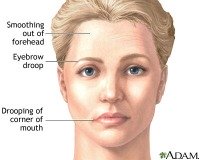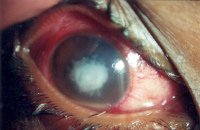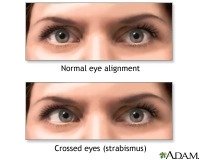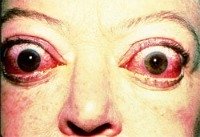|
Eye Problems
The eyes have been described as windows to the body and conditions that affect your body may affect your eyes as well. Also, the medications you take can have an impact on your vision and eye comfort. These symptoms may indicate that you suffer from allergies. Allergies can often include Eye Allergies. Some conditions of the body can cause decrease in vision, peripheral vision, or eye discomfort. A decrease in vision does not always point to a progressive disease, however. An example of Eye Problems that can cause profound decrease in vision and yet is non-progressive is Amblyopia. Perhaps you have been told by an eye doctor that you have a lazy eye. A lazy eye, otherwise known as Amblyopia, can be caused by a high uncorrected eyeglass prescription in one or both eyes, or even by an eye turn. Some Eye Problems of the eyes may be common while others are rare. Are you a young adult between the ages of 20 and 40 who has had a recent bout of viral or flu-like illness? Have you experienced a rapid loss of vision that eventually has affected both eyes? Have you noticed blotchy blind spots and sensitivity to light? You may have Acute Posterior Multifocal Placoid Pigment Epitheliopathy (APMPPE). While APMPPE is a rare disorder, a refractive error like Astigmatism is common. Astigmatism is more frequently due to a cylindrical shape to the cornea, and more rarely due to an irregularly shaped crystalline lens. Regardless of its source, it causes distortion of objects viewed. The eyes are not only affected by environmental particles as in the case of allergies, but by the neurological functioning of your body. A dysfunction in your nervous system can have damaging effects on your eyes.
Since this facial palsy can make it difficult for you to close your lids, it can leave your eye exposed and consequently result in corneal dryness, ulceration, and blindness if intervention is delayed. The cornea is protected by the lids and Eye Problems like Blepharitis can cause chronic irritation of the eye. Blepharitis refers to a range of conditions characterized by dermatitis or eczema of the eyelids that may be acute or chronic, with either inflammatory or infectious causes. The lids also have a variety of oil glands that keep your tear film stable and prevent evaporation of your tears. If one of these oil glands gets clogged, you may develop a Chalazion. A Chalazion is a common inflammatory mass of the eyelids marked by a reaction to the lipid (or oily) secretions of the oil glands of the eyelids. Eye Problems not only affect the front of the eye like the lids and cornea, but can affect the back of the eye such as the retina. Are you immunocompromised (i.e., your body’s ability to fight disease is diminished for any reason)? Have you tested positive for Human Immunodeficiency Virus (HIV)? Do you have Acquired Immunodeficiency Syndrome (AIDS)? Cytomegalovirus (CMV) Retinitis is a well-recognized, vision-threatening, and organ-invasive manifestation of Cytomegalovirus infection in individuals with a decreased ability to fight infection (such as AIDS patients). Diabetes is another condition that can create Eye Problems. Are you experiencing decreased vision? Are you seeing floating spots in your field of vision, otherwise known as 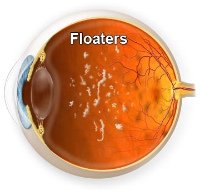
floaters? Are you diabetic or suspect that you are? You may be suffering from Diabetic Retinopathy. In addition to the ability to differentiate between objects and read letters, another important aspect of vision is the ability to differentiate between colors. Color blindness is the inability to appreciate any color. Color deficiency is the inability to discriminate certain colors. Eye diseases, trauma, and toxicity (such as from certain medications) can cause Color deficiency. A deficiency in distinguishing colors may impact your selection of occupation. Certain occupations such as pilot, train conductor, and electrician require the processing of color information and thus normal color vision. Medications can worsen your allergy symptoms, affect your vision, color vision, and even make your eyes uncomfortable by causing dryness. Do your eyes bother you? Do you experience a burning sensation in your eyes? Do you suffer from a sandy, gritty feeling in the eyes? Do your eyes water? You may have Dry Eyes (aka Keratoconjunctivitis Sicca). Dry Eyes is perhaps the most common Eye Problems that primary eye care providers encounter in daily practice and the single most common complaint among contact lens wearers. Your eye doctor can recommend treatment to alleviate your discomfort. From this discussion you can appreciate the importance of having your eyes routinely checked by an eye doctor to rule out eye diseases, the impact of body diseases on them, and/or the adverse effects medications can have on them. Because your eyes are exposed to the external environment, you also should protect them from infection. Are your eye(s) burning? Are they red, tearing, possibly painful, sensitive to light and/or releasing a white or yellow discharge? You may have an
A part of the eye that is particularly at risk for infection is the conjunctiva (the transparent tissue covering the white part of your eye). The common laymen term of “Pink Eye” can actually be caused by a number of infectious agents or environmental allergens. When your eye is red, you may have Viral Conjunctivitis, Giant Papillary Conjunctivitis, Acute Bacterial Conjunctivitis, Allergic Conjunctivitis, Inclusion Conjunctivitis, Vernal Conjunctivitis, or Acute Conjunctivitis, for example. Your eye doctor can help distinguish between these and let you know if you are contagious or not. A potentially vision-threatening eye infection can happen to the cornea in the form of a Corneal Ulcer. . A Corneal Ulcer is an open sore on the cornea (the front transparent lens) of the eye. If you look in the mirror, it may look like a white spot on the front of your eye. Because the cornea is exposed to the outside, it is susceptible to infections and injury from foreign objects. One foreign object which has often been implicated with Corneal Ulcers is contact lens use. Another critical component of your eyes are the muscles around each eyeball, helping to move the eyeballs in sync and keeping them looking in the same direction. At times these muscles do not function properly, causing
Crossed Eyes means both eyes can move, but one is out of alignment with the other, like the front wheels of a car. It could be that glasses or eye muscle surgery or both will be necessary to straighten your eyes. When one eye is out of alignment with the other eye, you may experience Diplopia. Diplopia is a term for double vision. Diplopia can indicate a neurological problem. For this reason, if you experience sudden double vision, go to your eye doctor immediately for evaluation, especially if you have just experienced any trauma to your eye(s). Eye injuries are a big concern to the eyes because of the potential for vision-threatening damage. Have you sustained a direct blow to the eye by a clenched fist, a ball, or champagne cork? Then you have experienced Blunt Trauma or Contusion Injury to your eye. Sports, welding, sheet metal work, industrial work and other hazardous activities put your eyes at risk for burns, chemical burns, abrasions, lacerations, or even worse, penetrating injuries. An eye injury can disfigure the eye and cause emotional distress to the victim. Cosmetic Contact Lenses can play a significant role in helping the cosmesis of patients who have experienced damage or disfigurement of one or both eyes as a result of medical conditions or trauma. Cosmetic Contact Lenses can also be used to change Eye Color. Another potential consequence of trauma is Eye Floaters. Eye Floaters are most commonly caused by normal aging. Certain eye diseases like Diabetic Retinopathy or Retinal Detachment can cause them as well. Eye Floaters may appear like spots in your field of view. These spots may sometimes look like spider webs or flies in your field of vision and may look more apparent when you look at the sun or view an object with a bright background. Not only do your eyes have muscles helping them to move, nerves controlling eye movements and sending visual information to the brain, but they also have a rich blood supply nourishing these muscles and nerves. Unfortunately, just like in other parts of the body, blood vessels can become blocked and cause an 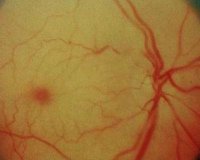
Eye Stroke or Eye Occlusion. If you experience sudden vision loss, you need to go immediately to your eye care provider. In addition to checking your eyes for an Eye Stroke or Eye Occlusion, your eye doctor will check the location of the blockage and its extent. Not only can you have Eye Problems due to disease, infection, or medication use, but they can be affected by stress. Do your eyelids twitch? Have you experienced recent stress (such as change of job, move to new location, change in marital status, testing in school, or increase in job work)? Are you fatigued or have you gotten little sleep recently? You may have have Eyelid Myokymia, or Eyelid Twitching. Especially in children, Eyelid Twitching can be a sign of uncorrected refractive error. This means your doctor will check you for glasses. An example of a refractive error is Hyperopia. You are farsighted when you have Hyperopia. This means you are sighted at far, or you see better at far and worse at near. The most common way to correct Hyperopia is to use spectacles and contact lenses. Although glasses are a healthy and safe way to correct vision, they are not a perfect solution by any means. Have you had trouble adjusting to a pair of glasses? Have you been told that you have “perfect” vision with your glasses, but you consistently notice halos, starbursts, and problems with night driving? You may have High Order Aberrations (HOA). Your set of HOA is unique to your eye, as your fingerprint is unique to you. Basically, when a point of light passes through your eye, the aberration(s) your eye possesses will disperse or spread the beam, causing the point to blur. The point of light will take on a characteristic appearance when it hits the retina, depending on the aberration(s) present. In a nutshell, Eye Problems can be affected by a spectrum of neurological, circulatory and infectious agents as well as autoimmune conditions. Endocrine gland disorders like hyperthyroidism can have adverse effects on your eyes.
This condition can create problems for your eye’s vision and comfort, ranging from lid retraction, trouble with eye movements, and optic neuropathy. Other autoimmune conditions can cause acute or chronic inflammations in the eyes such as Iritis. Iritis is inflammation of the iris (the colored part of the eye) and may occur as a direct result of ocular trauma. Occasionally, inflammatory reactions in adjacent tissues (like the cornea Keratitis) can induce a secondary Iritis. The cornea can also be affected by non-inflammatory conditions. Keratoconus Keratoconus is a corneal disease marked by corneal thinning (referred to as ectasia), which results in a bulging outward of the central cornea with subsequent corneal distortion and Irregular Astigmatism. Heredity plays a factor in this disease. Heredity also plays a factor in multiple rare retinal conditions such as those described by the German ophthalmologist Theodore Leber, These Eye Problems are collectively known as Leber Eye Disease. |





